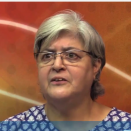THERE has been a great deal of anguish, angst and anger expressed at the death of Stanislaus Lourduswamy (1937–2021), popularly known as Stan Swamy, an Indian Roman Catholic priest, a member of the Jesuit order, and a tribal rights activist for many decades.
Swamy was the oldest person to be accused of terrorism in India. His supporters say that his death was hastened by the conditions in the prison where he was incarcerated. The repeated denial of bail resulted in deterioration of his health and he finally died of COVID-19 complications on July 5, 2021. Knowing that the end was near, he had asked to be allowed to die in his home in Ranchi rather than in jail.
Swamy was arrested on October 8, 2020 and charged by the National Investigation Agency (NIA) under the Unlawful Activities (Prevention) Act (UAPA) for his alleged role in the 2018 Bhima Koregaon violence and links to the Communist Party of India (Maoist).
His death has drawn focus to the cruelty of the system which denied the right to die with dignity to a senior citizen who was suffering from Parkinson’s disease. However, the imprisonment of Stan Swamy and other political prisoners, including poets, journalists, bloggers, women activists, students, Dalits and Muslims, raises crucial questions. It is not just a humanitarian issue but a political one.
At least one veteran human rights activist, Sumanta Banerji, says we should not merely condemn the State but firmly demand it be accountable. He suggests human rights activists demand: (i) punishment of the NSA officials who framed Stan Swamy in a false case; (ii) penalizing of the jailor and warders of Taloja jail where he was deprived of medical facilities that led to the deterioration of his health by putting them behind bars and imposing fines; dismissal of the concerned judges for gross misconduct in denying bail to the bedridden octogenarian and their permanent ouster from judicial ranks.
Banerji, now well past 80, was himself a Naxalite prisoner. We were both active in the People’s Union for Democratic Rights (PUDR), being its secretary at different times. The post-Independence human rights movement began with the demand for release of all political prisoners arrested during the Emergency in 1975.
The political prisoners included people of divergent political views ranging from Kuldip Nayar, the veteran journalist, to Prabir Purkayastha, a student of Jawaharlal Nehru University (JNU) and a member of the Communist Party of India (Marxist), Vijay Prasad, a Delhi University student and a socialist by conviction, Shankar Guha Niyogi, the legendary trade union leader, and hundreds of Naxalite prisoners to members of the RSS who had opposed the Emergency.
The 1970s saw a rise in the number of political prisoners all over the world. One writer has described the decade not as a Golden Space Age but as “a new era of barbarism.” In an article published in the Saturday Review in June 1974 titled “Geography of Disgrace” based on an Amnesty International report, the author estimated that there were between one million to two million political prisoners all over the world. By “political prisoners” he meant those incarcerated solely because of their political views.






